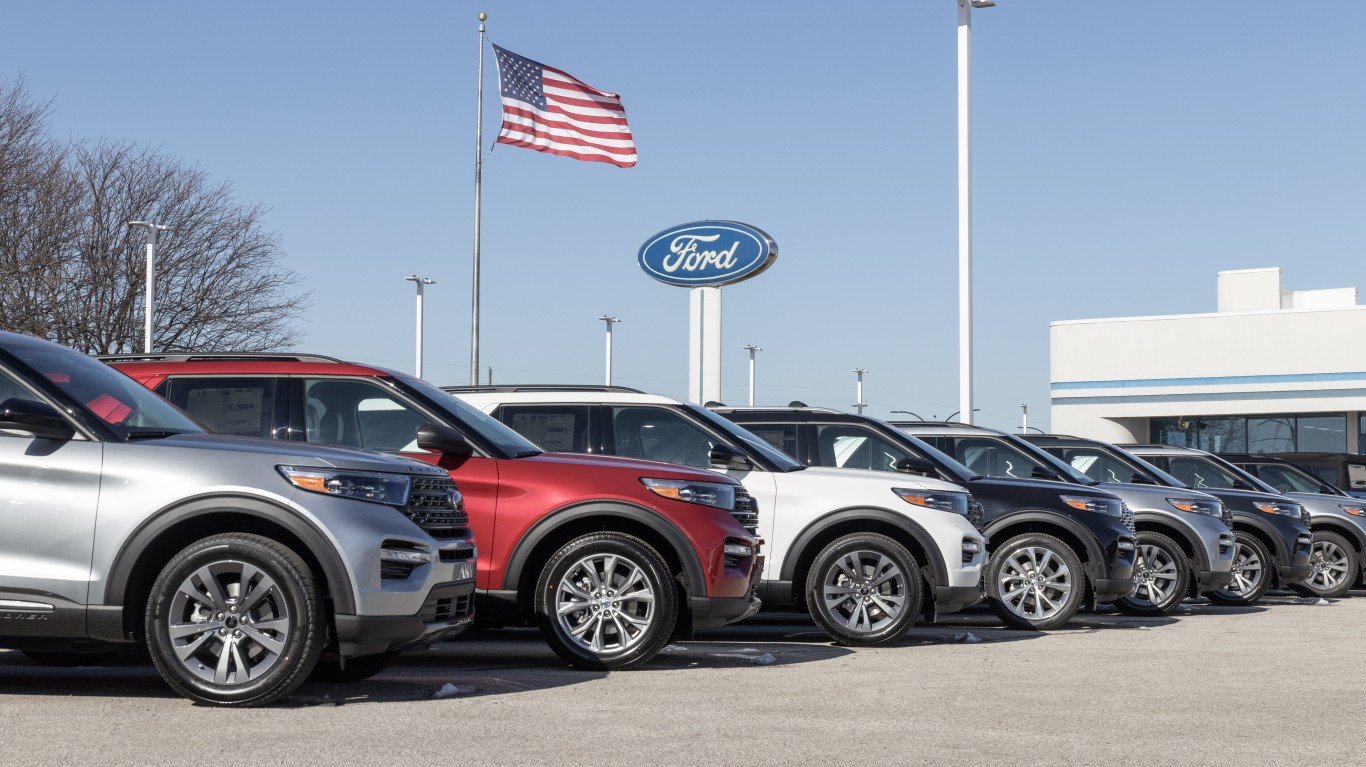

One of the most embarrassing problems Ford Motor Co. (NYSE: F) has had recently is trouble telling consumers what it will charge for its cars, especially its electric vehicles (EVs). In late August, Ford management said it would increase the price of its wildly popular Mustang Mach-E by an eye-watering $3,000 to $8,000. Ford also raised the prices of its higher-end F-150 Lightning models, which is absolutely the key to the success of Ford’s EV future.
[in-text-ad]
As if the botched decision to set the original prices on these vehicles were not enough, it has just raised the price of the entry-level F-150 Lightning by $5,000. CNBC calculates the jump as about 11% over the previous numbers. Most importantly, the announcement risks Ford’s ability to sell its first wave of popular EVs and puts it at a distinct disadvantage over the competition, which tends to be more accurate with price announcements.
William C. Ford Jr., Ford’s executive board chair and the man who actually runs Ford, commented to The New York Times in April that the new F-150 Lightening was “betting the company’s future.” He added, “If the launch doesn’t go well, we could tarnish the entire franchise.” He does not have to wait any longer to see the outcome. The launch of the Lightening is a catastrophe, almost exclusively because Ford could not make the most basic consumer-facing decision, which is to tell customers what a car or truck would cost.
Ultimately, unless outsiders want to blame Bill Ford for the pricing mistake, the debacle falls at the feet of Mr. Ford’s handpicked chief executive officer, Jim Farley. He has made a series of mistakes mostly related to supply chain forecasts. The most visible of these was that he underestimated the third-quarter expenses of Ford by an extraordinary $1 billion. A supply chain problem has caused up to 45,000 Ford vehicles to be parked in lots until missing parts finally reach Ford’s assembly operations.
Ford cannot get off the hook for mistakes in EV pricing or parts shortage problems. As it is one of the world’s largest manufacturers, management cannot simply throw up its hands and say it has no solution to the problem or is not sure when supply chain issues will improve.
The largest challenge to Ford’s success in the short term is not just whether it can increase unit sales. It also depends on whether management can guess what the vehicles it makes will cost the consumer.
ALERT: Take This Retirement Quiz Now (Sponsored)
Take the quiz below to get matched with a financial advisor today.
Each advisor has been vetted by SmartAsset and is held to a fiduciary standard to act in your best interests.
Here’s how it works:
1. Answer SmartAsset advisor match quiz
2. Review your pre-screened matches at your leisure. Check out the advisors’ profiles.
3. Speak with advisors at no cost to you. Have an introductory call on the phone or introduction in person and choose whom to work with in the future
Take the retirement quiz right here.
Thank you for reading! Have some feedback for us?
Contact the 24/7 Wall St. editorial team.



